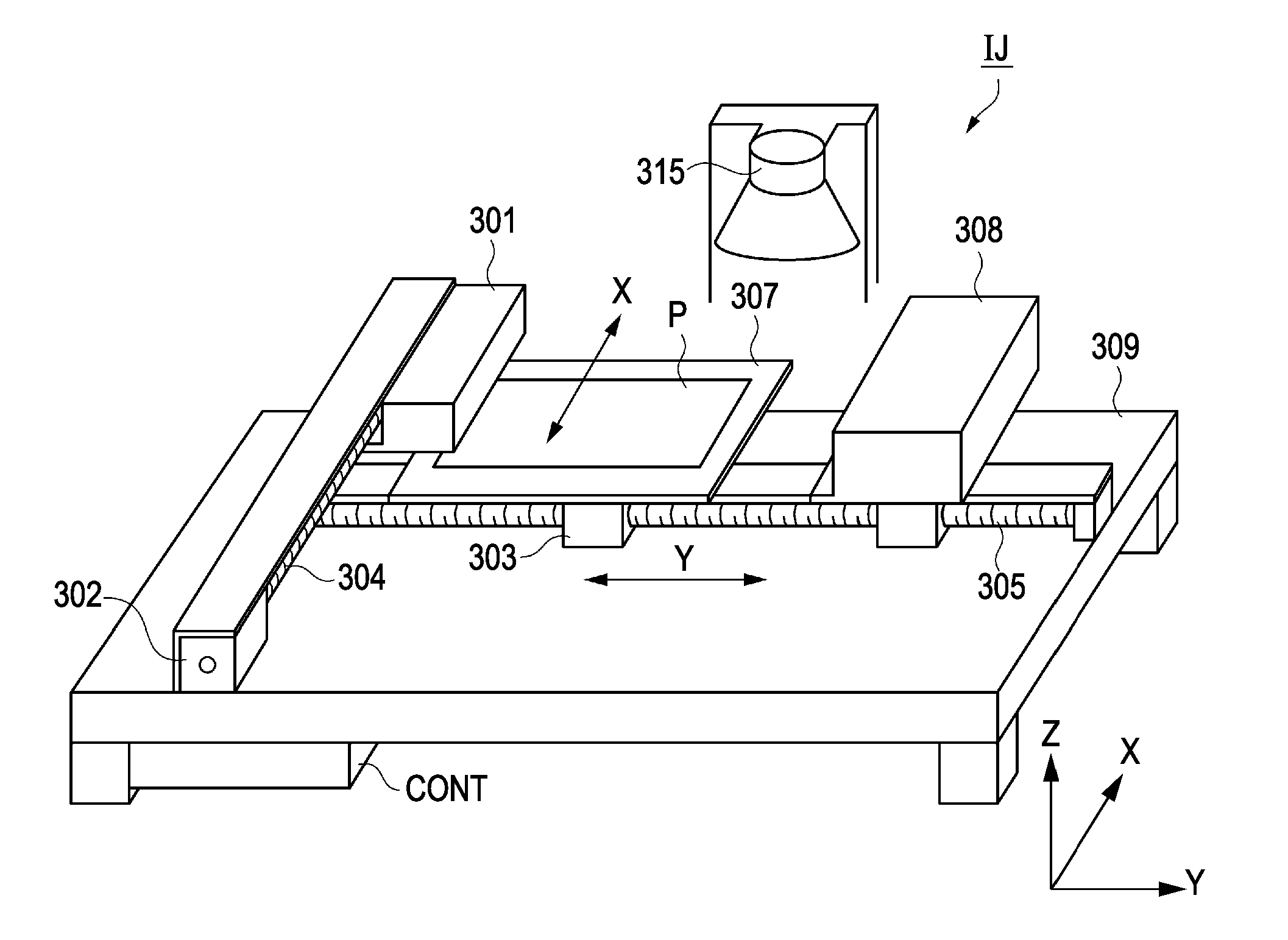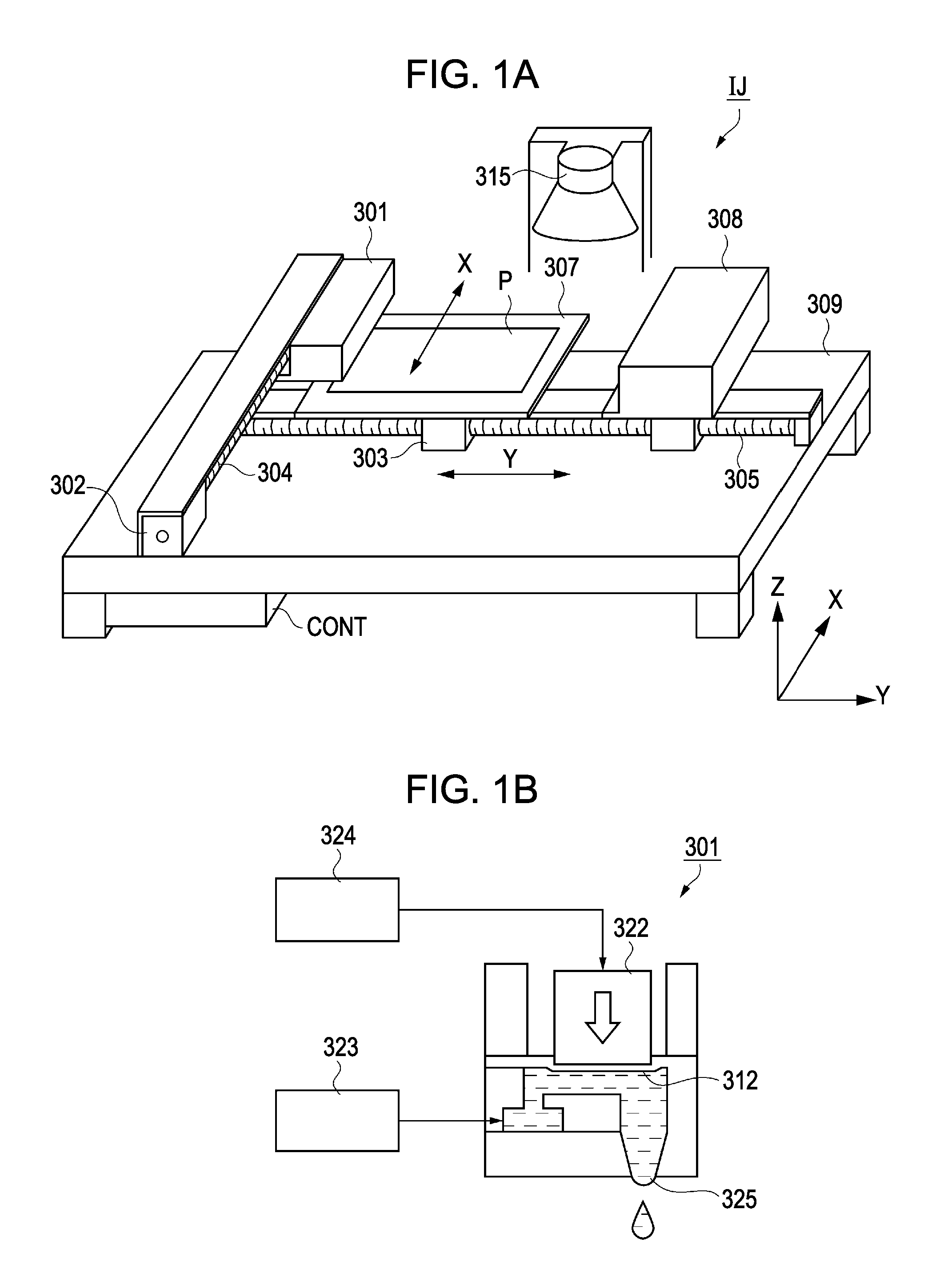Method of forming conductive film and method of manufacturing electronic apparatus
- Summary
- Abstract
- Description
- Claims
- Application Information
AI Technical Summary
Benefits of technology
Problems solved by technology
Method used
Image
Examples
Embodiment Construction
Method of Forming Conductive Film
[0038] Hereinafter, preferred embodiments of the invention will be described with reference to the drawings.
[0039]FIG. 1A is a schematic view illustrating a droplet discharge device which is used in a forming method according to the present embodiment, and FIG. 1B is a cross-sectional view for explaining the method of forming a conductive film. FIGS. 2A to 2D are cross-sectional views for explaining a conductive film forming method according to an embodiment.
Liquid Material
[0040] In the present embodiment, a case will be described, in which liquid material including particulate material is disposed on a substrate by using a droplet discharge method, and after, a conductive film pattern is formed. As the liquid material which is used in the forming method according to the present embodiment, material obtained by dispersing particulate material into a dispersion medium is used. A conductive film forming material which is suitable for forming a co...
PUM
 Login to View More
Login to View More Abstract
Description
Claims
Application Information
 Login to View More
Login to View More - R&D
- Intellectual Property
- Life Sciences
- Materials
- Tech Scout
- Unparalleled Data Quality
- Higher Quality Content
- 60% Fewer Hallucinations
Browse by: Latest US Patents, China's latest patents, Technical Efficacy Thesaurus, Application Domain, Technology Topic, Popular Technical Reports.
© 2025 PatSnap. All rights reserved.Legal|Privacy policy|Modern Slavery Act Transparency Statement|Sitemap|About US| Contact US: help@patsnap.com



